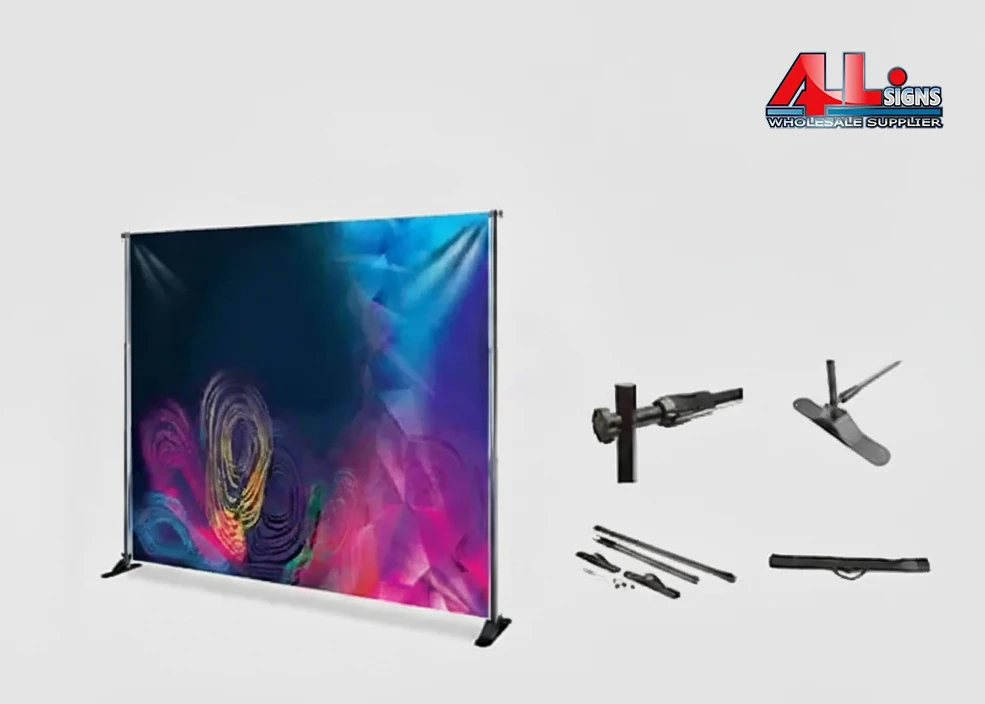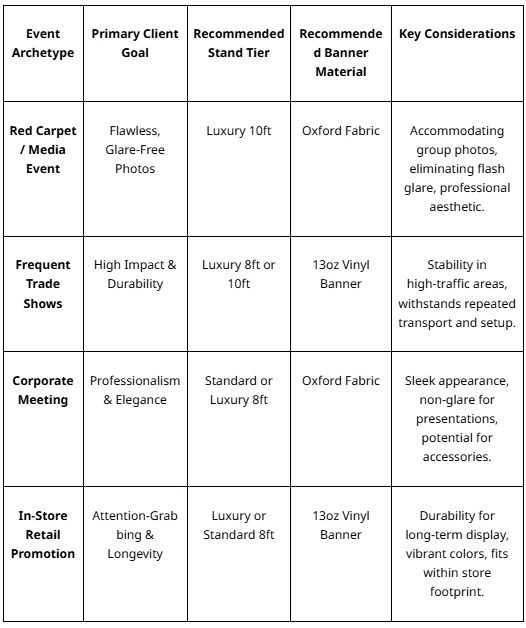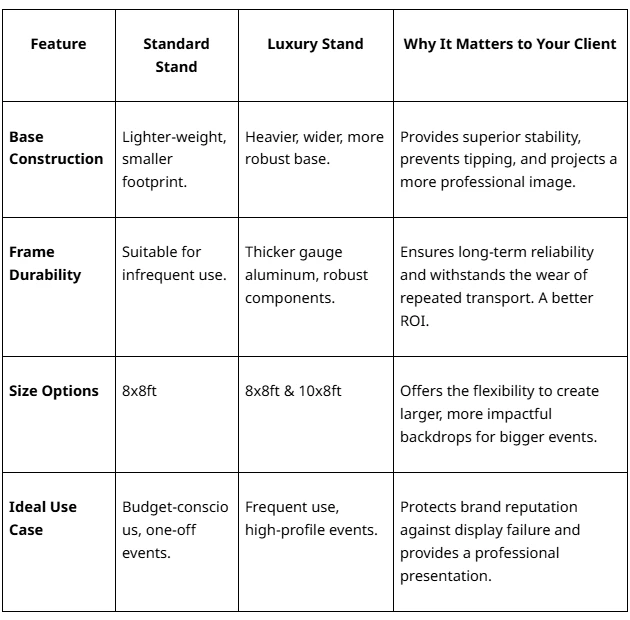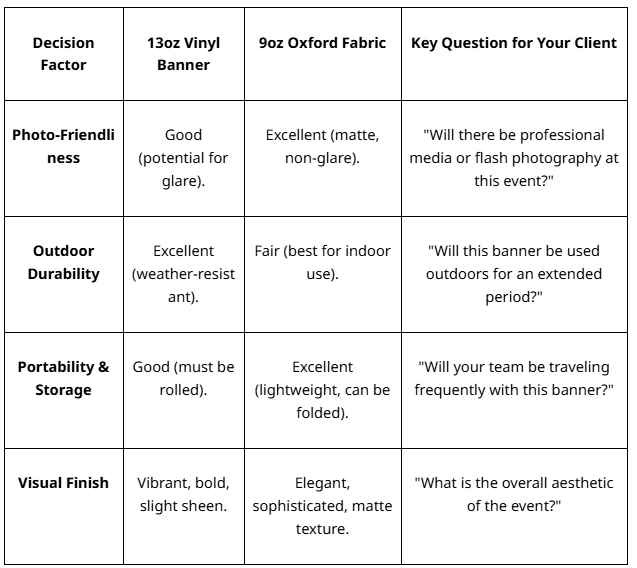
Thank You
Your account is pending approval. You’ll receive a confirmation email once activated.

Event marketing can feel like a three-ring circus, right? Your clients are the ringmasters, juggling a million tasks at once, and they're looking to you for the gear that makes the show go on without a hitch. That's where the telescopic banner stand comes in—it's the reliable acrobat of the display world. The more you, as a reseller, know about these stands—what makes them great and what makes them wobble—the more you become an indispensable part of their crew. A solid recommendation from you doesn't just sell a product; it saves the day and makes you the go-to expert they'll call first next time.
You've seen them everywhere, right? From the wonderfully chaotic trade show floor to the fancy media event with all the flashing cameras. There's a good reason they're a go-to: they give you a pro-looking backdrop that you can pack up without a major hassle. But with a million different models out there, picking the right one can feel like a total guessing game. That's where we come in. This guide will break it all down so you can help your clients get the perfect stand, no guesswork required.
Before we dive too deep, let's keep it simple. "Telescopic" just means the poles are made of tubes that slide into each other to extend, kind of like a camera tripod or one of those old-school pirate spyglasses. This simple but brilliant design is what lets a massive 10-foot frame collapse down into a bag you can toss in your trunk. For anyone who's ever had to drag gear across a parking lot and through a giant convention center, that feature alone is a lifesaver.
That brings us to the banner stand. It uses those same adjustable poles to let you customize both its height and width. This flexibility is its greatest strength. It means one piece of hardware can handle a bunch of different banner sizes, fitting snugly in an 8-foot booth one week and expanding to command a 10-foot space the next. All high-quality telescopic stands should offer this level of adaptability.
Of course, a stand is only as good as the locks that stop its poles from doing a slow, sad slide downwards during an event. You'll generally run into two main types:
The best way to guide your client is to put on your consultant hat. Asking a few smart questions helps you zero in on what they really need and find the perfect match for their big day.
The first question should always be, "So, what's the event?" The answer tells you a story about the style, toughness, and features the stand needs to have.

Once you know the "what," it's time for the "where." Thinking about the physical space can prevent some truly face-palm-worthy moments later on.
Finally, chat about how often the display will be used. This helps the client see it as a smart investment, not just another expense.
On a website, a lot of these stands can look like twins. But in the real world, the difference between a great stand and a frustrating one is all in the details of how they're built. Knowing what to look for helps you explain why one is worth the investment. Let's talk about the two most important parts: the frame and the base. The poles are almost always aluminum because it's strong without being heavy. The real difference is in the thickness. Better stands use thicker aluminum, which is what keeps the top bar from bowing like a sad banana once you hang the banner.
But the base is the real unsung hero. It's what keeps the whole thing from falling over. Economy stands have simple, lightweight feet. Luxury models have heavier, wider steel bases. This gives them a lower center of gravity, which is just a physics-y way of saying they are way, way harder to knock over. When your business is wholesale printing and signage, selling hardware you know won't fail is just good business.
The banner is what everyone looks at, so the material choice is huge. It affects looks, performance, and how easy it is to travel with.

A huge plus of a quality stand is that you can use it again and again. Giving clients a few tips on care helps them protect their investment. Vinyl banners just need a gentle wipe with a damp cloth and should always be stored rolled. Good quality Oxford fabric banners can often be machine washed (on a gentle cycle!) and steamed on a low setting to get rid of wrinkles. For clients asking where to buy telescopic banner stand packages with great materials, working with a trade-only supplier is the surest path to get reliable gear.
Yes! You can add a screen using an easy trick: attach a tablet holder that clamps right onto a pole. It’s perfect for running a slideshow, capturing email sign-ups, or showing a demo video. If you're thinking bigger, like a TV screen, your best bet is to use the stand as your main branded backdrop and place a separate monitor stand in front. This gives you a clean, multi-layered setup that looks super professional.
You want soft, even light. The pros use two lights on stands, placed at 45-degree angles to the display. This "two-point lighting" gets rid of weird shadows. The one thing you want to avoid is a single, on-camera flash—that’s the villain that causes harsh glare and unflattering shadows. (Check our step ann repeat banners at Allforsigns.com)
Thinking about Return on Investment (ROI) helps your client see this as a smart business move. A simple way to put it is: ROI = (Value of Buzz + Value of New Leads) - Total Cost. You can guess the "buzz" value by seeing how many times the backdrop shows up in social media hashtags or press photos. The lead value is easier—how many good conversations or badge scans happened in front of the display? This shows that a great display doesn't just cost money; it can make money.